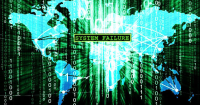Our mission is to support public awareness of national security, economic security, and moral leadership
Please note: Our office is moving. Phone system might be disrupted. Please email info@ascf.us for assistance.
OUR MISSION
Since 1958, the American Security Council Foundation's (ASCF) mission has been to protect American freedoms and values by promoting public awareness of national security, economic security, and moral leadership through a policy of "Peace through Strength."
Educating our children on America's Founders and Founding documents is a matter of national security. Our American History Live program is a unique, interactive, real-time program for our future generation (K-12). It promotes civic participation and an appreciation of our nation's founding.
ASCF is an educational non-partisan, non-profit, 501 (c)(3) organization. We rely on fundraisers, sponsorships, grants, and donations to keep our programs running.
IN THE NEWS
-
Ukraine - Chump Change
April 24 2024 -
Iraq militant group says it is resuming attacks on US forces as base in Syria is targeted
April 22 2024 -
China- TikTok Talks $
April 22 2024 -
Ceasefire
April 15 2024
ARTICLES:

February 12th, 2024
by ASCF Sr. Analyst, Laurence Sanford
"Wray said the world is much more dangerous due to the CCP's massive hacking programs. They are larger than the rest of the world combined. Wray has warned of CCP espionage and, most recently, of CCP efforts to infiltrate critical infrastructure networks."

Worrisome Words and Dangerous Days
March 2024 - by ASCF Sr. Fellow Alan Dowd
"Biden has not used the bully pulpit to educate the American people about the threats arrayed against us—certainly not in the concerted manner needed to awaken a world-weary, inward-looking populace. Moreover, neither the White House nor Congress has put forward a defense budget equal to the moment."

February 5th, 2024
By ASCF Sr. Analyst, Laurence Sanford
"China's cyber crimes are perhaps the most dangerous of all CCP gray zone actions in its “unrestricted warfare” against the United States."
NERVE CENTER
Mr. Sanford believes the expansion of BRICS which includes Iran, Saudi Arabia, UAE, and Ethiopia could have enough traction to move International trade away from the U.S. dollar. They also discuss why sanctions don't work and why Green Energy subsidies benefit the CCP, not the U.S.
Mr. Dowd gives the technical definition of allies and explains why it is in our best interest to support free democracies. He details the economic and security implications for support of Taiwan, Ukraine, and Israel.
Polls indicate over 65% of Americans support military aid to Israel, Ukraine, and Taiwan in light of the Reagan Doctrine. Americans may be fatigued from the wars in Afghanistan and Iraq but still support democracies fighting to stay free from authoritarian regimes.
All of our podcasts can be viewed on YouTube or Rumble, our Facebook, or your smartphone. Please support our efforts by subscribing to our channels and commenting.
EDUCATIONAL PROGRAMS
American History Live (AHL) is a unique program whose mission is to educate, entertain, and help students retain American history and civics. AHL accomplishes this by engaging students in conversations with real-time, interactive historical characters. Characters include Ben Franklin, Abigail Adams, Prince Hall, Alexander Hamilton, and Betsy Ross.
Learn more at www.americanhistorylive.org
Assignment Blue is a supplemental tool to assist educators in teaching children about the role of police and resource officers in our communities. Interactive Police dog characters Officer Frederick and Officer Alice zoom into classrooms in real-time. Other lesson plans include good citizenship and volunteerism, as well as reinforcing active assailant drills.
Learn more at Assignment Blue.
To schedule a demonstration contact us or call 772-388-2490












